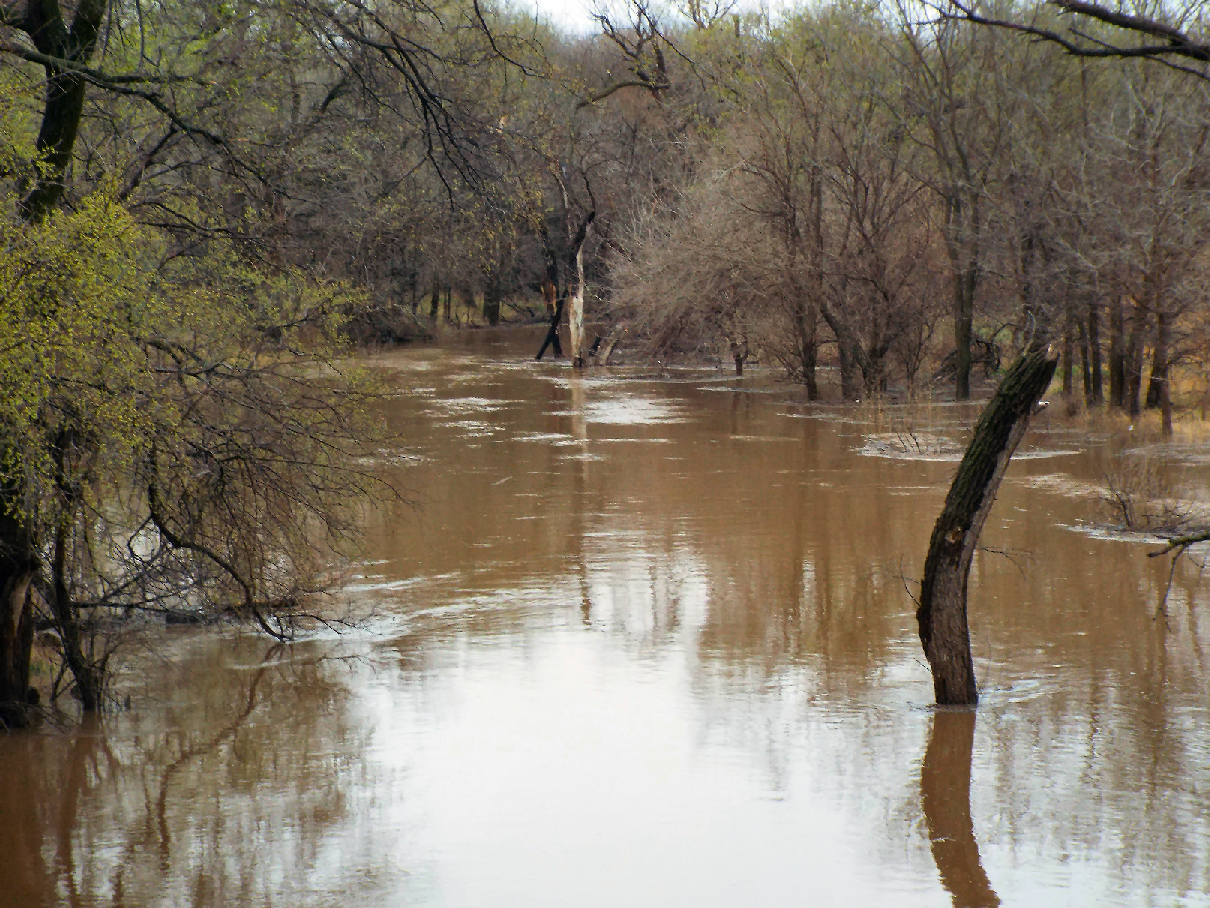Officials caution people living in or near high-water areas to not be surprised if they see more wildlife than usual.
According to the Kansas Department of Wildlife, Parks, and Tourism, animals living near flooding bodies of water or in low-lying areas will be forced to temporarily move to other locations to survive. They could congregate on high-ground “islands,” in residential or commercial areas or around outbuildings. Residents may even find small animals in homes or outbuildings if they’re not well-sealed.
Animals such as rabbits, rodents, lizards, snakes, turtles, insects, certain birds or even larger animals such as coyotes and deer may be on the move. Here are some tips to be aware of when you spot a flood-weary animal –
- Leave them alone. They need a refuge from high water and might only be passing through. They will not set out to harm you, but any animal may bite or attack in self-defense.
- Small animals like lizards and snakes may congregate under shrubs, rocks and debris. Use caution and protective clothing such as long pants, gloves and sturdy shoes if you need to work in the yard or garden. Above all, do not reach blindly under rocks and debris. You don’t like surprises, and neither will a sheltering animal.
- Many animals can swim and may get trapped in a flooded building, so use caution when removing possessions from a flooded structure.
- Do not try to feed them. Free food may encourage them to overstay their welcome.
- The water will eventually recede, giving animals the opportunity to return to their former habitats, so be patient and be a good neighbor to our wildlife.
- Most animals can adapt to changing weather conditions, but not all. Be aware that some animals will perish but many more are likely to survive.
- Ground-nesting birds and other animals may lose their nests or burrows and their eggs or young. Many will re-nest as soon as they find proper habitat. Though it may take time, most animal populations will eventually recover.
- Do not attempt to rescue animals stranded by high water, as flood waters are dangerous and can obscure serious hazards.
- Keep an eye on pets to be sure they don’t tangle with displaced wildlife or chase wildlife into floodwaters.
If displaced wildlife have become a nuisance, people can visit the KDWPT website at https://ksoutdoors.com/Services/Wildlife-Damage-Control and find a list of wildlife damage control permit holders (NADC Permit Holders) who may be able to assist.



